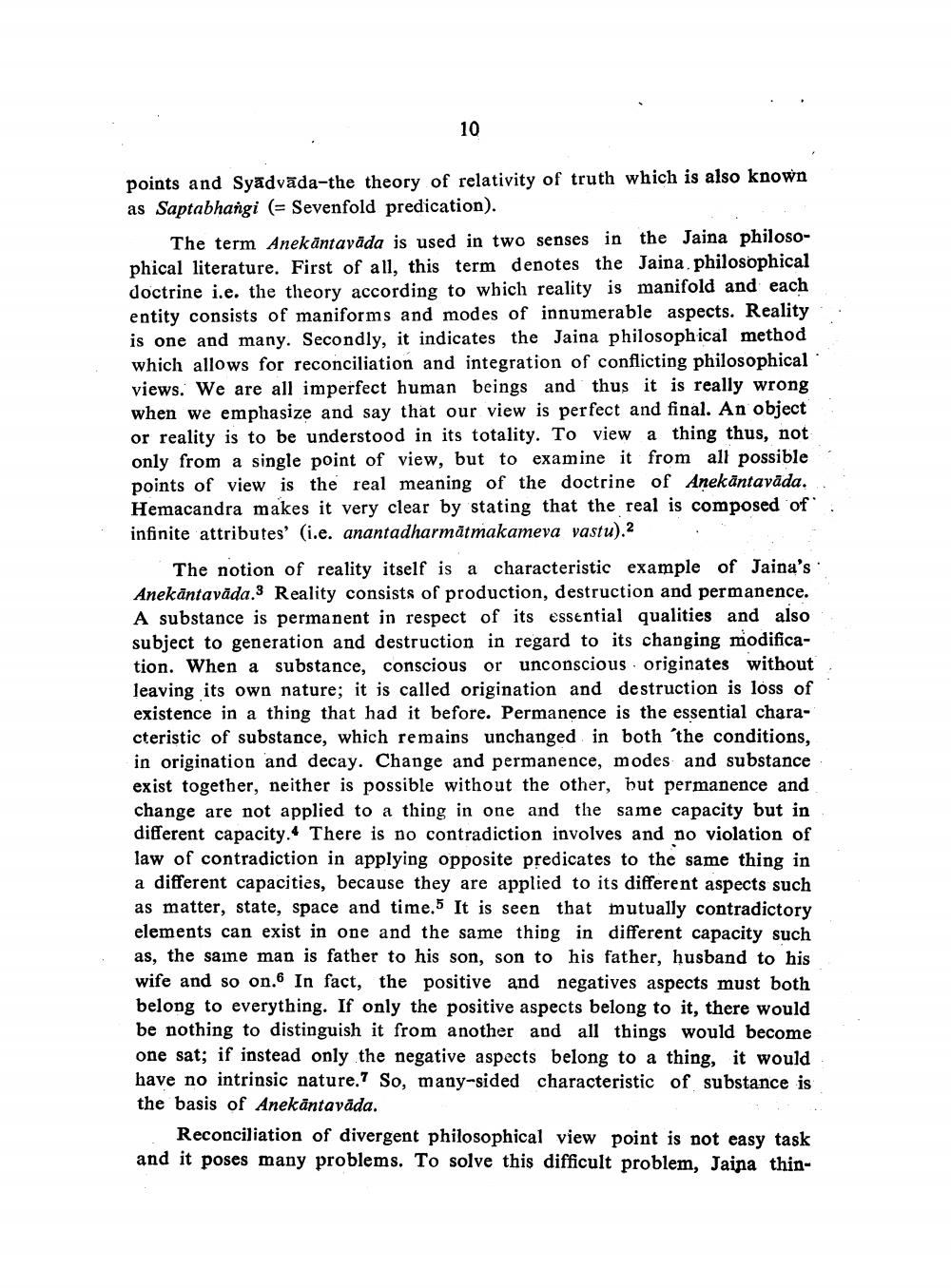________________
10
points and Syādvada-the theory of relativity of truth which is also known as Saptabhangi (= Sevenfold predication).
The term Anekāntavāda is used in two senses in the Jaina philosophical literature. First of all, this term denotes the Jaina philosophical doctrine i.e. the theory according to which reality is manifold and each entity consists of maniforms and modes of innumerable aspects. Reality is one and many. Secondly, it indicates the Jaina philosophical method which allows for reconciliation and integration of conflicting philosophical views. We are all imperfect human beings and thus it is really wrong when we emphasize and say that our view is perfect and final. An object or reality is to be understood in its totality. To view a thing thus, not only from a single point of view, but to examine it from all possible points of view is the real meaning of the doctrine of Anekantavāda. Hemacandra makes it very clear by stating that the real is composed of infinite attributes' (i.e. anantadharmätmakameva vastu).2 .
The notion of reality itself is a characteristic example of Jaina's Anekantaväda.Reality consists of production, destruction and permanence. A substance is permanent in respect of its essential qualities and also subject to generation and destruction in regard to its changing modification. When a substance, conscious or unconscious originates without leaving its own nature; it is called origination and destruction is loss of existence in a thing that had it before. Permanence is the essential characteristic of substance, which remains unchanged in both the conditions, in origination and decay. Change and permanence, modes and substance exist together, neither is possible without the other, but permanence and change are not applied to a thing in one and the same capacity but in different capacity. There is no contradiction involves and no violation of law of contradiction in applying opposite predicates to the same thing in a different capacities, because they are applied to its different aspects such as matter, state, space and time. It is seen that mutually contradictory elements can exist in one and the same thing in different capacity such as, the same man is father to his son, son to his father, husband to his wife and so on. In fact, the positive and negatives aspects must both belong to everything. If only the positive aspects belong to it, there would be nothing to distinguish it from another and all things would become one sat; if instead only the negative aspects belong to a thing, it would have no intrinsic nature. So, many-sided characteristic of substance is the basis of Anekāntavāda.
Reconciliation of divergent philosophical view point is not easy task and it poses many problems. To solve this difficult problem, Jaina thin




